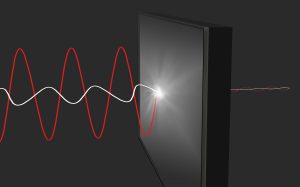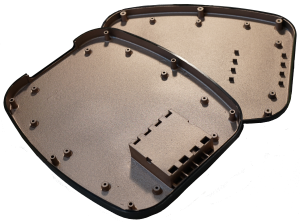
Conductive coatings simplify the EMI/RFI suppression process
By MG Chemicals
Production / Materials Contract Manufacturing Engineering Supply Chain Conductive coatings EMI/RFI shieldingEMI/RFI is a growing issue in electronics and engineers must design solutions to manage it. Conductive coatings can commonly be an effective part of the solution. MG Chemicals recently launched a new line of conductive coatings for EMI/RFI suppression, which provides a choice of three chemistries and four pigments.

Conductive coatings deliver effective EMI/RFI shielding of electronic enclosures, pcb components and architectural structures, across a broad range of frequencies.
Electromagnetic Interference (EMI) and Radio Frequency Interference (RFI) are two sides of the phenomena where electronic devices create and are affected by electromagnetic radiation. Often, the terms RFI and EMI are used interchangeably because radio waves are simply a subset of the electromagnetic spectrum. However, in practice, EMI generally refers to short range interference caused by high frequency emissions within the device itself, while RFI refers to longer wavelength interference from sources external to the device. EMI and RFI affect devices differently, but they are a related phenomenon and a common issue for today’s electronics.
Today’s environment is filled with EMI/RFI
EMI/RFI is a growing problem in the modern world. Today’s environment is filled with EMI/RFI. Radio, cell phone and WIFI transmitters permeate space with signals. Solar activity and other sources from outer space also create significant radio wave noise. Additionally, as devices become smaller, they are increasingly vulnerable to EMI/RFI, especially when the distance between circuits are less than one wavelength. This creates a challenging environment for electrical engineers.
Electro-Magnetic Compliance (EMC) is now a critical part of electronic design, achieved when a device is designed to be protected from external EMI/RFI, and does not significantly generate its own. Government bodies and industry organizations such as the Federal Communications Commission (the FCC) and Society of Automotive Engineers have written comprehensive laws and guidelines for EMC that electronic devices must meet before being sold. Achieving EMC is no small task.
EMC is achieved through good circuit design
Most EMC is achieved through good circuit design. Opposing magnetic fields cancel each other out, therefore circuits are designed so that the field from one part nullifies the field of another part. However, this does not eliminate all emissions. EMI/RFI shielding is commonly necessary to capture residuals. A basic example is shielded twisted pair wiring, where two wires run in opposite directions are twisted together so that their electromagnetic fields cancel each other out. The twisted pair is then put into a metal tube that essentially eliminates residual EMI/RFI. The metal tube eliminates the EMI/RFI because it is conductive.
EMI/RFI shielding is a layer of conductive material. It may protect a device from its environment or components within a device from each other. For example, the inner surface of plastic electronic enclosures is commonly coated with conductive paint so that the enclosed device does not interfere with its environment. In another case, components are protected from each other by applying a thin layer of conductive coating over a thin layer of insolating coating. In both cases, conductive paints provide effective solutions.
Conductive paints for EMI/RFI shielding
MG Chemicals supplies a range of conductive paints for EMI/RFI shielding and related applications. Customers can choose between three coating chemistries, and four pigments.
The coating chemistries are acrylic, water based urethane and epoxy. Of the three, acrylic is the most commonly used. It is applied to electronic enclosures, satellite dishes, and some board level applications. Water based urethane is mainly used in architectural applications where its low VOC content is required to meet environmental regulations. It is used on electronic enclosures as well, however. Some users prefer it over acrylic because it is non-flammable, has no noxious vapors and it is not a dangerous good when shipped by air. Epoxy is used when extreme durability is needed. It offers mar and scratch resistance, very strong adhesion, extreme abrasion resistance, impact resistance, and strong chemical resistance. The three coating chemistries serve similar purposes, but each has unique properties.
Carbon is best for low frequency shielding
Likewise, each pigment brings its own set of properties. The four available are carbon, nickel, silver-coated copper and silver. Carbon is best for low frequency shielding, musical instruments and grounding. Nickel is suitable for most device level shielding applications, offering good shielding and excellent corrosion resistance. Silver coated copper provides superior shielding. Silver offers the highest shielding and best corrosion resistance. Carbon is the least costly material, while silver is the most expensive solution. Engineers can thus select the most cost effective solution for their application.
This choice of coating chemistry and pigment creates a matrix of products that essentially adapts to the requirements of the application. This gives engineers a flexible tool for achieving EMC in a wide range of applications in today’s demanding environment.


